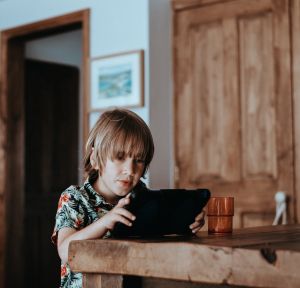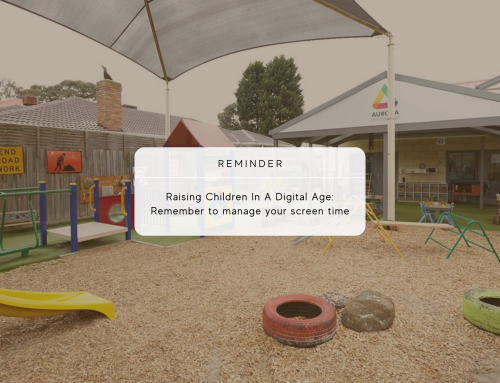Aurora celebrates Safer Internet Day to encourage safer use of the internet amongst ourselves and our children. Over the past few days, we’ve asked children whether they know what the internet is. Surprisingly, most didn’t, but they were familiar with ‘iPads’, ‘computers’, and ‘laptops’. We then asked them what they think they’re used for – here are some of their answers.
“We use iPads for watching videos, but computers are just for work.”
“My mummy uses computers to work for school.”
“I love watching YouTube!”
From their answers, we can see that even if our children don’t exactly know what the internet is, they definitely love using it. In fact, the government eSafety department’s research claims that 81% of Australian preschoolers are internet users according to their parents.
As we firmly embed ourselves within the digital age, it’s essential for us as caregivers to build a knowledge about safe internet uses and practices in our children. There’s no better day than today – Safer Internet Day to start the conversation.
What is Safer Internet Day?
February 9th is dedicated to promoting a safer internet for all its users and raising awareness on a variety of concerns such as social networking, digital identity, and cyberbullying, to name a few. This means establishing safer practices that help users of all ages employ the internet appropriately.
This year marks the 18th edition of Safer Internet Day which is centered around the theme “Together for a better internet”. The Safer Internet organisation emphasizes that everyone has a societal duty to create and maintain a better online world, especially for our children.

Ways we can establish safe internet practices
At Aurora Early Education, we strive to ensure that our children are taught and prepared to deal with life and its challenges as and when they come. In doing so, we want to also see to it that they are aware of the internet and its uses as it has been a substantial part of life for a while and will continue to be as technology itself develops alongside our children.
The Insafe Network of Safer Internet Centres provides numerous resources for parents, caregivers, and educators to encourage a safer internet. The resources include games, storybooks, films, and activities that relate to and incorporate internet safety navigation tips.

Firstly, a major practice that we can start with on our own is encouraging conversations about using the internet and including key messages that will help expand online safety awareness in our children. The key messages that we should instill are simple, they all begin with being kind. This refers to having a kind spirit and attitude as well as performing kind actions to others using the internet. And when discussing kindness, it is important to mention that in addition to being kind, they should also be safe and cautious by making good choices and asking for help when entering unfamiliar virtual territory. By doing that, our children can build good habits when using the internet both in their homes and elsewhere.
In these conversations, we should explore how influence, persuasion, and manipulation can impact young people’s decisions, opinions, and what they share online. In order to tackle this, it is important for parents to consider investing in a family media plan to alter what appears on their feeds, browsers, and what apps they have access to. This is helpful because what our children might share online or rather what might be shared to our children online can be monitored through the family media plan, keeping them protected from unwanted information or interaction.
Moreover, checking device and privacy settings is also a good safe internet practice. Making use of parental controls and blockers for ads, in-app purchases, and location services is greatly helpful when children are using apps.
Simultaneously, it is beneficial to engage with child-friendly search engines like Kiddle when children feel the need to look up information. In addition to that, parents can show their young ones how to directly go to children’s content providers’ websites or applications on their devices.

In the long run, following these practices along with showing support for the cause online will definitely help push the internet to become a safer tool for children to utilize without much constraint.
Sources:
https://www.saferinternetday.org/
https://www.esafety.gov.au/about-us/events/safer-internet-day-2021/educators/young-children





